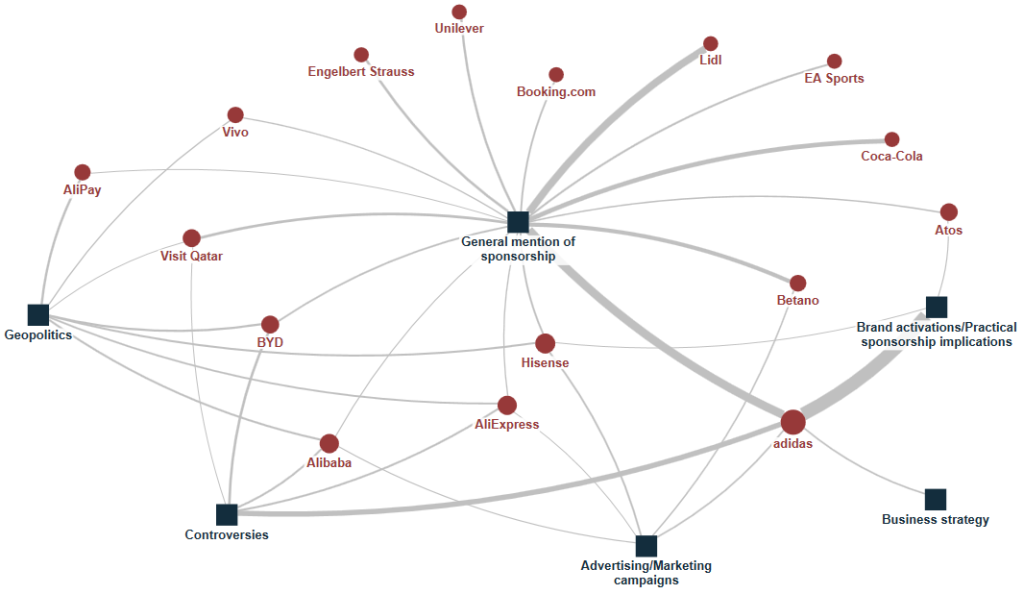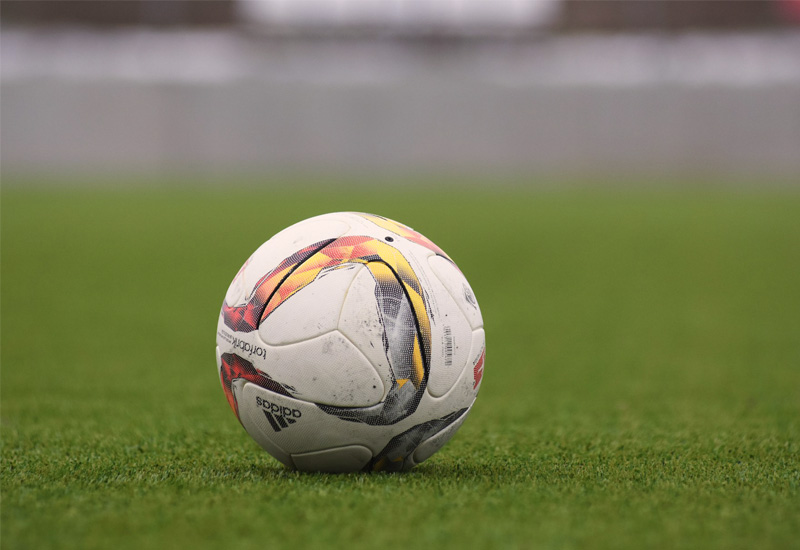adidas was the most prominent brand in the Euros debate, as it focused its PR on the practical implications of its sponsorship and reinforced its brand attributes on social media.
The context: Considering the global appeal of the UEFA Euro 2024 as one of the world’s most-watched football competitions, it’s no surprise that brands are paying good money to be associated with it.
And as with every major sports event, CMOs will again be under pressure to provide a good answer to the most crucial question: how do I measure the effectiveness of my sponsorship campaign?
The most obvious metric – the financial return generated from the sponsorship relative to its cost – is the most unreliable, as the correlation between sales data and sponsorship efforts has been repeatedly found to be dubious.
Brand awareness – conducting surveys to see how well your audience recognises the brand – has also been proven problematic.
There’s something more valuable that should be measured – the reputational impact that a sponsorship campaign has created. This is arguably more important and difficult to measure, as it doesn’t boil down to one simple number.
As an example let’s take the most prominent Euro 2024 sponsor. In our analysis of nearly 400 Euro-related articles published in English, German, Italian, Spanish and French around all the sponsors – adidas, AliExpress, Alipay, Atos, Betano, Booking.com, BYD, Coca-Cola, EA Sports, Engelbert Strauss, Hisense, Lidl, Unilever, Visit Qatar and Vivo – adidas was the clear winner in terms of share of voice among the top 10 most influential sponsors:
So how did adidas do it? Here’s what we found:
1. It tapped into the practical implications of its sponsorship
Our mapping analysis revealed that while most of the companies were mentioned just generally as sponsoring the Euro or in the context of their business strategy, adidas was among the few that gained traction with its brand activations and the practical implications of its sponsorship.
This is illustrated on the map below, which shows the links between the topics in the media debate (represented by squares) and the companies (represented by circles).

The top-trending story within that topic was the official match ball for Euro 2024, which featured adidas’ connected ball technology that sends precise ball data to video assistant referees (VARs) officials in real-time.
It was at the centre of adidas’ comms strategy and it was the first time this technology has been used at the Euros.
It wasn’t the case that the other sponsors didn’t do anything. For example, Alipay was the official digital payment provider, Atos was the IT solutions provider, Booking.com helped UEFA find and manage accommodation for the teams and referees, while Lidl was the official fresh food partner, highlighting the importance of fresh fruits and vegetables and the benefits of sports and exercise.
However, adidas was the company that most effectively managed to turn its brand activation into a compelling media story.
2. It didn’t shy away from controversy
Controversies are already something commonplace for big sporting events – just take a look at the 2022 FIFA World Cup in Qatar, which drew allegations of everything from bribery and financial mismanagement to slavery.
Albeit on a smaller scale, Euro 2024 wasn’t without its controversial moments as some fans customised their adidas soccer jerseys with the number “44” so that it resembles a Nazi symbol.
Much of the attention on the jerseys came when Michael König, a historian in Germany, wrote on X that it was “questionable” for the design to be allowed in official sporting events.
adidas’ move to ban the customisation option became one of the top-rending narratives around the brand, with many media outlets commending the brand for its swift action.
In contrast, sponsors like AliExpress and BYD, which were also involved in some controversies, didn’t respond in any way.
3. It reinforced its brand attributes on social media
adidas was also the most impactful brand on X, as we found analysing 3,561 tweets around the Euros posted in the last 30 days in English, German, Italian, French and Spanish.
And that was to a large extent because the company managed to tap into the English fans’ emotions by releasing an ad that borrows The Beatles’ classic 1968 track, “Hey Jude”, showing support for the English team and specifically Jude Bellingham.
adidas’ two-minute film uses The Beatles’ song to chronicle the disappointment England felt losing to Italy in the final round of Euro 2020 and the nation’s hopes for victory this year.
The brand debuted the cover ahead of the tournament and it quickly caught on among English fans, who used it as a soccer chant. Spotify reported that streams of Hey Jude increased by 19% and according to creative effectiveness platform DAIVID, the “Hey Jude” campaign was the EURO 2024 ad that’s generating the most positive engagement from viewers.
But more importantly, our analysis of the 3,561 tweets showed that the main adidas brand attribute – the quality that most people associate with the brand – in the X debate was inspirational:
The Hey Jude campaign was in line with adidas’ marketing strategy that emphasises storytelling to create meaningful connections with consumers, leveraging popular culture and iconic music to evoke emotions and deepen brand loyalty, as seen in their strategic collaborations and campaigns that resonate on a personal level.
In the meantime, the connected ball technology reinforced adidas’ innovation brand attribute, while addressing the “44” jersey controversy maintained adidas’ focus on ethical practices. As such, the X debate reflected adidas’ strategic pillars of innovation, emotional connection and social responsibility.
How Commetric helps with sponsorship campaigns
We have a long history of assisting major corporations with the challenge of measuring and managing their sponsorship campaigns. We utilise our advanced media analytics solutions, blending AI and human expertise, to analyse various sources including social and traditional media, corporate websites, annual reports and sponsorship databases, which in turn leads us to:
- Mapping the sponsorship narratives: As seen in our adidas case study, mapping the prevalent narratives and stakeholder dynamics around a sporting event provides strategic insights for sponsorship campaigns, enabling sponsors to track competitor activity baselines and resonant messaging.
- Monitoring the impact: We employ advanced media monitoring techniques to gauge the visibility and impact of sponsorships in both traditional and social media, analysing mentions of the sponsoring companies and the sponsored entities to understand the reach and engagement of their sponsorship activities.
- Audience insights and engagement: By analysing data from social media interactions and search queries, we provide insights into audience engagement and interests. This helps companies to tailor their sponsorship strategies to better meet the expectations and interests of their target audiences.
- Sponsorship strategy refinement: Based on the collected data and insights, we provide recommendations for refining sponsorship strategies, including suggesting the best communication channels, types of sponsorships that resonate well with audiences, and how to align sponsorships with broader corporate goals and values.
